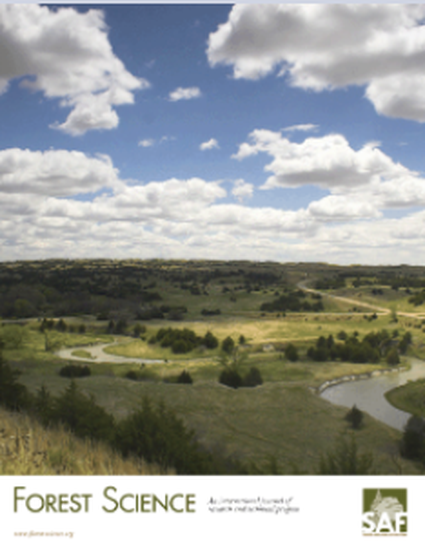
Article
Development of Arceuthobium pusillum on Inoculated Black Spruce
Forest Science
(1981)
Abstract
The development of Arceuthobium pusillum was monitored on branches of Picea mariana inoculated in 1971. Of 1120 seeds placed on branches that remained alive, 137 were estimated to have germinated. Eight years later, in 1979, 19 staminate and 32 pistillate plants had developed. Including two questionable infections, and three which have yet to produce shoots, 41 percent of those seeds which germinated colonized host tissue and initiated symptoms. The symptoms observed include bark discoloration, twig swelling, loss of apical dominance, and witches'-broom formation. Dwarf mistletoe shoots first appeared 4 years after inoculation, in 1975, on 9 percent of the infected branches. These shoots produced flowers (and fruits on female aerial shoots) in 1976. In 1977, 15 percent of the infections produced flowers, 35 percent did so in 1978, 22 percent in 1979, and 11 percent will flower in 1980. An additional 6 percent of the inoculated branches have symptoms, but the parasite has not yet produced shoots. In this study, A. pusillum required a minimum of 5 years to complete its life cycle.
Disciplines
Publication Date
January, 1981
DOI
https://doi.org/10.1093/forestscience/27.1.203
Citation Information
Fred A. Baker. "Development of Arceuthobium pusillum on Inoculated Black Spruce" Forest Science Vol. 27 Iss. 1 (1981) p. 203 - 205 Available at: http://works.bepress.com/fred_baker/19/
